Guest post by Yanic Simard, Houzz Contributor
Moving into a new home with your old furniture is a bit like trying to put on clothes from 10 years ago. You may still love those pieces, but they may not all fit quite the way they did before. Luckily, in your home at least, there are lots of ways to adapt your old favorites to make them suit a new situation. If you’re willing to get a little creative, try out some of these tips for giving your existing furniture a new lease on life.
Shake up the routine. When we picture certain rooms in our heads, we tend to imagine a specific furniture layout, and this can be especially true in the living room. You might envision your new space having a classic sofa, a love seat and two chairs, but this isn’t the only layout that works. So don’t get hung up on your first vision.
Every space and every set of furniture have their own limitations and their own possibilities. Try laying out your furniture in a different way, either in real life or in a pencil sketch, to see what can work and what can’t. Figure out where furniture fits best, and then you’ll have an idea of what pieces you’ll need to add, move or eliminate to bring the room together.
Extend a sofa into a sectional. Have a great sofa that feels a little small in your new space? Rather than replacing it, consider extending it by adding an ottoman to create a sectional.
Having an ottoman custom-upholstered to match or coordinate with your existing sofa will be significantly less expensive than buying a new sofa. You can even have your sofa reupholstered at the same time to give it a new life and get a perfect match in whatever fabric and shade you prefer.
Add (or Reuse) End Chairs
A bigger home might mean room for a longer dining table, but now what do you with your set of chairs that’s short by two? And what do you do if you’re downsizing?
You may not still be able to buy two more of the exact chairs you have, but you can make the “mismatch” into a pleasing contrast by using two new chairs on the ends of the table.
Choose a style that’s a little grander and more richly detailed (consider arms) to make the contrast feel intentional.
Adding contrasting chairs to your table will introduce a lot of interest, and they can easily be reused later as side chairs in another room. On the other hand, if you have some extra side chairs from a past living room, bring them to the table as comfortable dining chairs.
In general, it’s smart to coordinate the chairs in different rooms of the home so that they can be easily moved between rooms in the future. A little consideration now will give you lots of mix-and-match options down the road, whether during a move or just for an extra-large dinner party.
Turn an old mattress into a daybed. Getting a bigger bed? That old mattress deserves better than being tossed out. Mattresses can be reused to make a daybed that’s perfect for a home office or den.
Buy a minimalist bed frame (or reuse the one you had) and push it against a wall, or choose one with sides. Pile on a few pillows and you’ve got a comfortable sofa for lounging and a spare bed for guests.
Change the legs to change the table. Often, the feature that determines the use of a table is the legs, while the part that really has value is the top — especially true when a table is made with a quality piece of stone or wood.
If you have a great table or console but nowhere to use it in a new home, consider replacing, adding, shortening or extending the legs to bring it to a new height. This can turn a small dining table into a coffee table, a chest into a media unit, or even a sideboard into a vanity.
Tip: Hairpin legs like the ones shown here are readily available online in various sizes, and give furniture a stylish contemporary twist. You can even use this trick to raise or lower a sofa, or just to give a furniture piece a new modern look.
Swap instead of buying or selling. Sure, these days there are lots of places to sell used furniture online. However, it can be hard to get good value for your piece, as people will often pay less than half of the original price, and sometimes much less.
Consider swapping your pieces instead, either with a friend or through a local swap meet or online group. Don’t worry who is getting the very best value in the trade; just make sure you end up with furniture that’s a better fit for your home, and know you couldn’t have gotten the same deal selling to a secondhand shop.
Use an old dining table as a desk. One of the great advantages of a home office is that it doesn’t have to look and feel so much like a typical office. If you have a perfectly good dining table that’s now a little small, consider recycling it as a spacious desk. You’ll enjoy having the extra room to spread out, and the space will feel much more personal.
Extend curtains with a stripe. If your new space has higher ceilings, taller windows or a different window layout (which is practically guaranteed), you may find yourself in need of completely new draperies — or at least it might seem so.
You can extend your drapery panels fairly easily by having a stripe of contrasting material added to the top, bottom or sides to achieve the correct length or width and create a pleasing color-block effect.
Alternatively, you can merge the panels from multiple windows to cover one window instead, so the fabric all matches. You can use, say, multiple panels from a past living room to cover a larger window in a new dining room.
Break up a sectional. The fact that a sectional was purchased to fit together a certain way doesn’t mean it absolutely has to stay in that configuration. Often the pieces can be reconfigured into a new layout that might fit a new space better.
Try incorporating a low or seat-height ottoman-coffee table (around 18 inches tall, depending on your sofa) to create a corner where no corner existed before, and shift a section over to expand the amount of usable seating area.
Use almost anything as a low table. Designers often praise stool-tables as multifunctional design superheros, but really so many items can serve double duty as a small table or seat.
Consider how pieces like chests, chairs (especially durable indoor-outdoor seats), crates and the like could be used to act as a small table in the bathroom, at the foot of the bed, on the patio — the list goes on and on, and the results are often beautifully unique.
Use a desk as a nightstand. Speaking of inventive tables, an older desk or similar-size console or cabinet can make a very elegant nightstand. Don’t worry about having a matching pair; you can use something completely contrasting on the other side and celebrate the asymmetry. The layout will be anchored by the bed, so it will still look balanced and centered regardless of the different tables.
Take down walls (in your mind). Living with a piece of furniture in a particular room for years and years can sometimes make you associate that piece with that room forever. However, often the best place for an old favorite in a new home is in a completely different room. Take down these mental walls and imagine any piece in a new space.
Move pieces to different rooms just to see them in a new light before you settle on where you think they should go. A side chair can suit an office, a chest of drawers from a bedroom can be moved to a dining room — the possibilities really are endless once you’re willing to do a little experimenting.
More
Decorating 101: How to Shop for Furniture | How Much Is This Going to Cost Me?
5 Things to Splurge On — and 5 Ways to Save
Related Reads
Spruce Up an Old Lamp With a New Lamp Shade
Round Up a Stunning Collection of Contemporary Furniture
How to Shop for Furniture




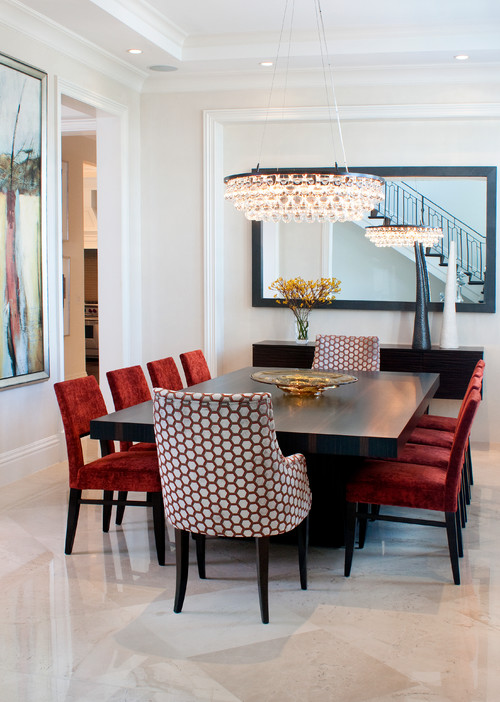
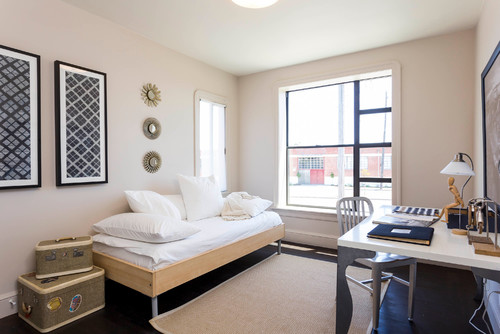

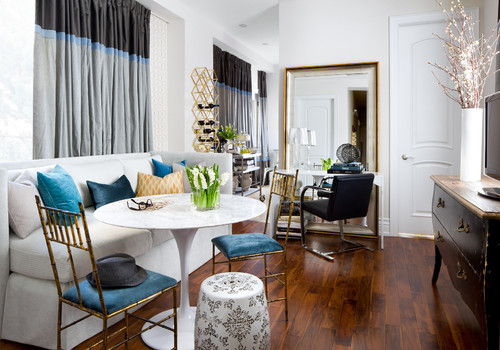
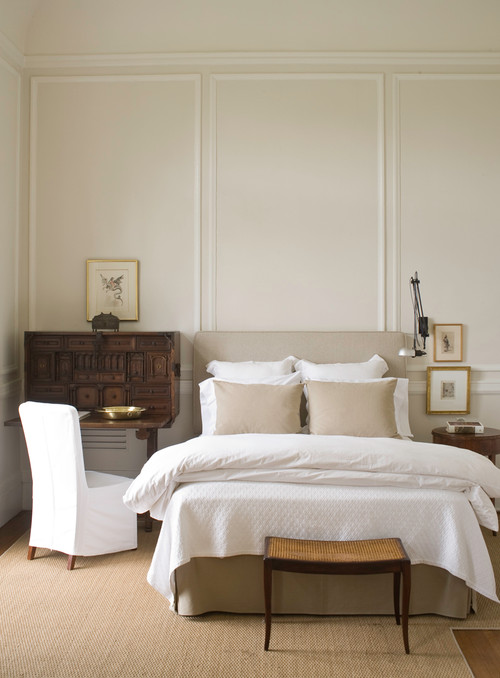



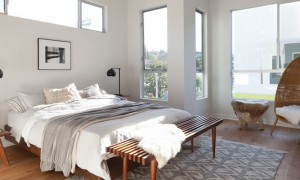


I like that you suggested using an old dining table as a desk. When I was reorganizing my house I didn’t even think to recycle some of the items. It might have been cheaper for me if I had tried using them for something else.